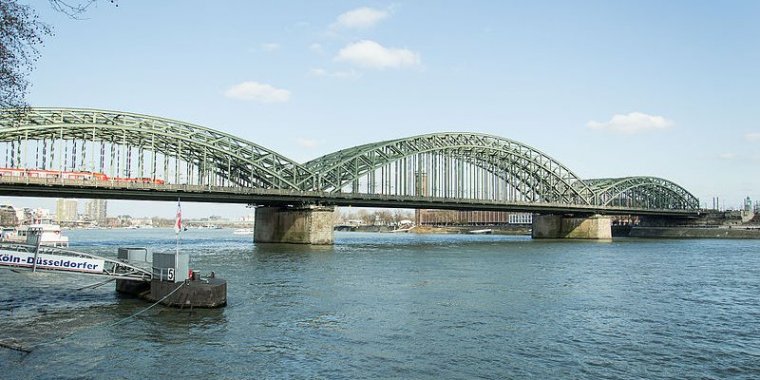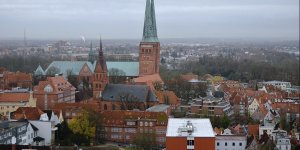| Travel / Tourist Attractions |
Hohenzollern Bridge (Hohenzollernbrücke) in Cologne, Germany

Hohenzollern Bridge in Cologne. ![]()
Originally, the bridge was both a railway and road bridge. However, after its destruction in 1945 and its subsequent reconstruction, it was only accessible to rail and pedestrian traffic. The total length of the Hohenzollern Bridge is 409.19 meters (1,342.5 ft).
It is the most heavily used railway bridge in Germany with more than 1,200 trains daily, connecting the Köln Hauptbahnhof and Köln Messe/Deutz stations.
The bridge was constructed between 1907 and 1911. The new bridge was named after the House of Hohenzollern, the rulers of Prussia and German Emperors. At the time, Cologne was part of the Prussian Rhine Province.
The bridge consisted of three adjacent bridge parts, each with three iron truss arches (passage openings) in the longitudinal direction to accommodate four railroad tracks and a road. Although the location of the bridge and the railway station were already controversial in previous structures, the Hohenzollern Bridge took over the orientation of the previous bridge on the central axis of the cathedral.
Four equestrian statues of Prussian kings and German emperors of the Hohenzollern family flank each ramp. (Wikipedia)
YOU MAY ALSO LIKE







